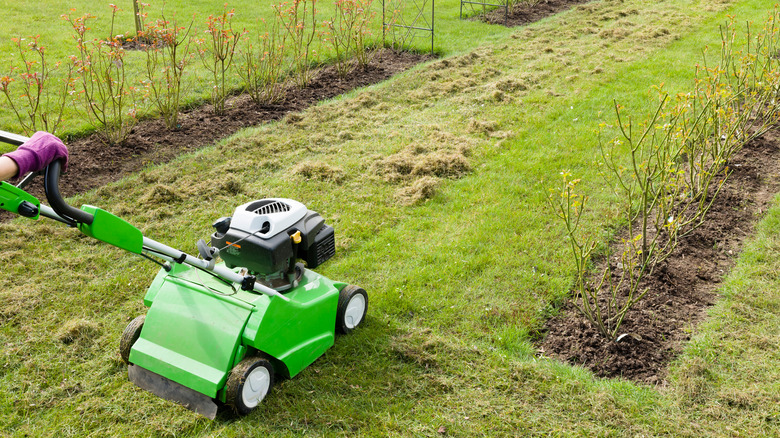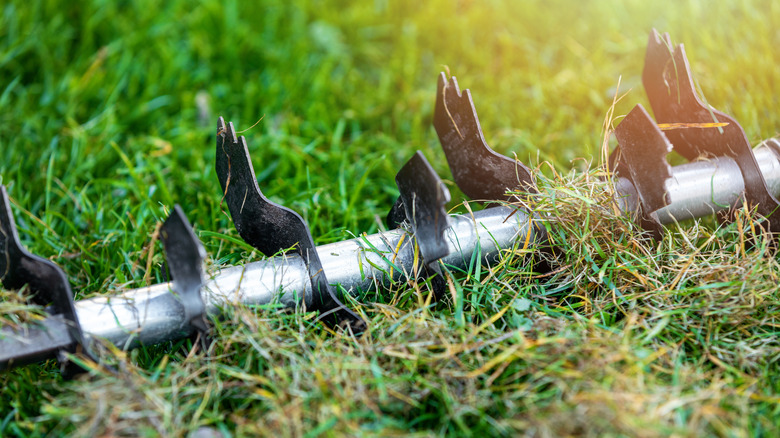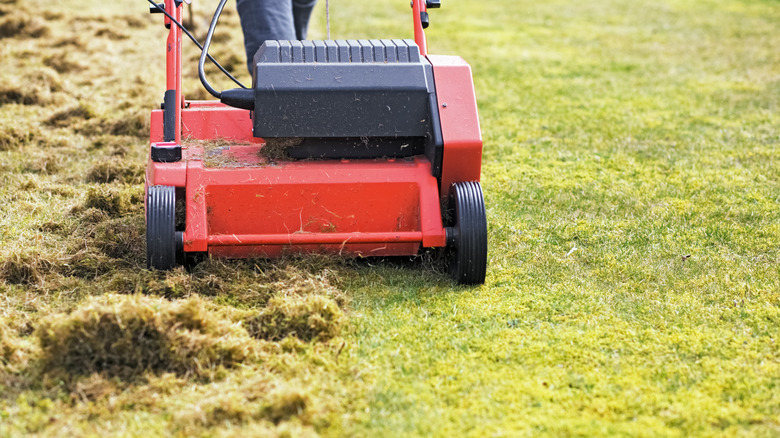Decide If Scarifying Or Dethatching Is Better For Your Lawn
To keep a lawn looking good, it needs proper maintenance and the right type of care. It needs to be correctly watered, fertilized, and trimmed regularly. The weeds should also be pulled regularly and the soil aerated so it can be more effective in feeding the grass. When it comes to long-term upkeep, scarifying and dethatching are two techniques that can be used to maintain your lawn as well.
Scarifying and dethatching both involve removing the top dead layer of a lawn, so they're often seen as the same thing, but they do have key differences. For starters, each method is performed with different kinds of equipment that don't look similar to each other, nor do they function in the same way. Scarifiers have sharp, pointed blades that dig into the ground to pull out thatch, while dethatchers look and work more like lawnmowers. The one you choose will depend on the exact current needs of your lawn. Here is how you can decide if scarifying or dethatching is better for your lawn.
When to scarify
Scarification involves using a scarifier to dig into the lawn and pull out thatch, moss, and other waste so that the roots can get the air they need to recover and grow again. It is a more aggressive process than dethatching, which is why it is best used when there has been a high level of damage done to your lawn or you want to start all over. You should also scarify if there is fescue grass because it grows thick and fast.
You can scarify with either a powered machine, a handheld scarifier, or a rake. For the first pass, slowly go over the whole lawn as if you're mowing until you've pulled up all the thatch. Then, go a second time at a 45-degree angle from the first pass but on a gentler power setting if you're using a machine. When you're using a handheld scarifier or rake, go deeper than the first time on this second pass. You can scarify your lawn one or two times a year, once in spring around March and again in late September before winter sets in.
When to dethatch
Dethatching your lawn requires the use of a dethatching rake, a powered machine, or a tow-behind unit to remove the layer of thatch and waste that has settled on the top without damaging the healthy grass. This is the best option for a lawn that doesn't have that much thatch on its top layer. Use the dethatching machine or rake as you would normally on grass until you've collected all the thatch and debris.
As mentioned above, dethatching is the less aggressive technique. It should be done with a new lawn that is still growing because it is much gentler than scarifying. If you want quick results and a quick easy recovery for your lawn, dethatching is the right technique for you. Similar to scarifying, try to dethatch your lawn once a year minimum around late March to early April, during the growing season. Whether you decide to scarify or dethatch, know that you can call in a professional lawn service if it gets to be too much, especially when the thatch is very thick and needs multiple passes with either technique.


